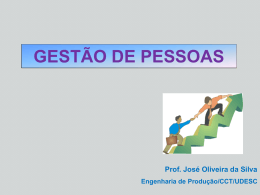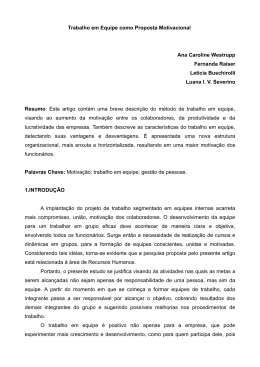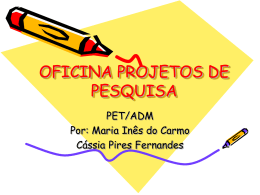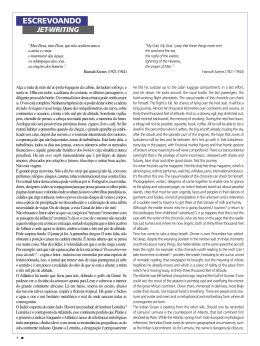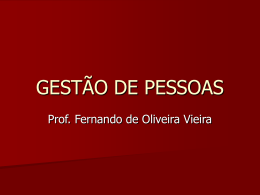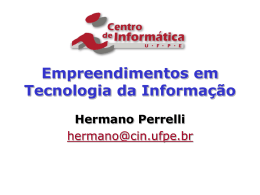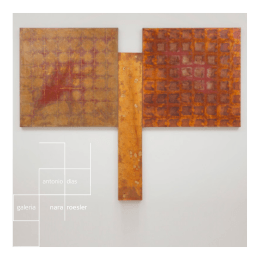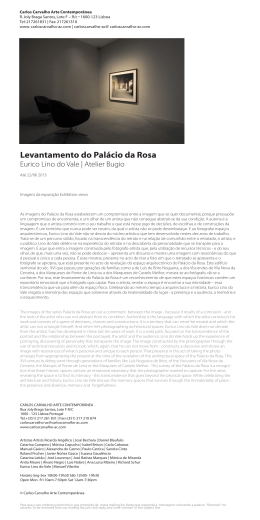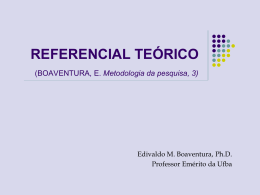Modelos para objetos escultóricos, 2013 | ateliê do artista, Rio de Janeiro carlos vergara Três folhas de papel craft, duas lisas e uma ondulada, produzem papelão corrugado. Quase madeira. Com esse material trabalho a vida inteira, como base, como fundo, como protagonista, como embalagem. Esses últimos objetos que estou fazendo vêm daí. Três planos, dois encaixes e está de pé uma imagem criando um lugar. Imagens, no dizer de Manoel de Barros, são palavras que nos faltaram. Objetos escultóricos, 2013 | aço corten | Museu do Açude, Rio de Janeiro (da esquerda para a direita) 2013 | aço corten | 230 x 140 x 95 cm 2013 | aço corten | 250 x 100 x 85 cm 2013 | aço corten | 180 x 130 x 115 cm No mundo dos negócios, assim como no mundo das vergara no museu do acude O Museu do Açude artes, a ousadia, o olhar autêntico que vê além da tem, pelos menos, duas fortes razões para celebrar matéria e a habilidade de tornar concreto o que se a realização da exposição de Carlos Vergara. Primeiro compôs primeiro no campo das ideias são aspectos porque é uma enorme satisfação receber um artista que impulsionam a capacidade de empreender, de que há décadas valoriza e reafirma a qualidade da pro- realizar. Por essa convergência entre mundos à pri- dução brasileira, e a outra porque confirma o acerto meira vista tão distintos, há mais de 40 anos a Klabin do Museu em focar seu interesse na relação do meio tem o prazer de contribuir para a trajetória do grande ambiente com a arte contemporânea. Um dos aspectos marcantes na trajetória do artista que é Carlos Vergara. Se na prática o papel envolve, embala e pro- artista diz respeito à relação entre o homem e o tege objetos cotidianos, na arte de Carlos Vergara meio. Seus trabalhos tomam partido de materiais ele se abre em novas formas e contextos; torna-se e registros de situações que podem variar entre protagonista da narrativa poética que permeia a os cenários do Carnaval ou da Penitenciária da Frei obra do artista. Caneca e entre regiões como o Pantanal, as Missões Para a Klabin é motivo de orgulho colaborar Jesuíticas do Rio Grande do Sul ou o Centro Histó com o percurso criativo de Carlos Vergara e para rico de Salvador, permanecendo, contudo, o vínculo a história das artes plásticas no Brasil. Esta publi- do artista com a paisagem e a vida social. cação conduz o leitor a uma jornada pela estética Nos trabalhos apresentados no Museu do deste singular artista em permanente diálogo com Açude, Vergara utiliza o lixo florestal – folhas secas, seu tempo. galhos de arbustos, hastes de palmeiras nativas, tocos de madeira ou ramos de flores – para, por um KLABIN S.A. lado, dar vida à sua obra e por outro, para distribuir esculturas de aço corten pelos jardins formais do museu, estabelecendo relação direta com a paisagem e o entorno ambiental de maneira não só nítida, como lírica. Castro Maya, que sempre usou sua residência de verão no Alto da Tijuca como um recinto de convívio entre o melhor da natureza e o melhor da arte, certamente estaria feliz em percorrer suas alamedas e recantos enriquecidos pelas obras de Vergara. , Vera de Alencar e Paulo sa Natureza como materia Felipe Scovino Talvez para muitos a prática escultórica de Carlos Vergara seja uma surpresa ou ao menos algo a que assistimos com pouca frequência na sua carreira. Contudo, essas esculturas “transbordam” pintura. A gênese das suas mais recentes esculturas está diretamente associada a um pensamento bidimensional. Nascem do plano e em particular pelo interesse que Vergara tem pela natureza. Ademais, o fato de esta exposição ser composta por lenços, desenhos e uma pintura demonstra, em especial, não só a passagem do plano ao espaço, mas o quanto todos esses suportes convivem harmonicamente e de forma indissociável em sua obra. É impressionante, por exemplo, a maneira como na pintura escolhida para esta exposição a representação da natureza e a sobreposição de camadas e vetores criam uma interseção de imagens que estão perfeitamente associadas às formas orgânicas e livres das esculturas. Estas, por vezes, parecem caules e em outros momentos, fragmentos de corpos humanos. É curioso esse momento de fusão de organismos, porque as esculturas em acrílico desejam claramente esse espelhamento da natureza. O fato de serem translúcidas faz refletir o entorno em sua estrutura. Ela é toda paisagem. Aliás, todas as esculturas expostas não querem imitar a natureza, porque elas já são parte dela. Só podem existir na exterioridade e, portanto, não se trata de ilustrar a natureza, mas ser parte dela. Elas não ocupam o Museu do Açude no sentido de preencherem de forma obrigatória e consciente espaços museológicos, mas parecem desejar uma espécie de camuflagem – daí as suas formas orgânicas e o modo como ocupam o lago e o entorno do museu –, como se sempre estivessem ali e pudessem ser confundidas com a flora local. Em todas as esculturas, por estratégias distintas, há a aparição de um corpo, e não afirmo apenas por conta da forma que elas aparecem ao mundo. Se nas realizadas em acrílico, ele é constantemente solicitado e presentificado naquele vazio que passa a ser preenchido pela experiência já citada do espelhamento, que transforma sua superfície translúcida em um feixe de cor, luz, matéria; 17 nas esculturas em aço corten, a passagem que esse material sofre ao longo do tempo transmite a ideia de um organismo vivo e pulsante à escultura. Assim como a natureza, o aço é índice de tempo. De uma estrutura pesada e com presença altiva no espaço, a escultura logo se converte em um corpo, digamos, suscetível a instabilidades. A sua forma opaca também se apresenta como uma plataforma para a ação da natureza, assim como nas translúcidas esculturas em acrílico, mesmo que por operações distintas. Há uma dupla circunstância temporal ocorrendo sobre aquela superfície. Concomitantemente à ação do tempo cronológico, há um investimento silencioso, perceptível apenas como experiência de longa duração, que de forma lenta nos revela a conversão do aço em pele. A oxidação e o surgimento de “imperfeições”, relevos, crostas, “desgastes” sobre a sua superfície associam-se a uma metáfora sobre a passagem de tempo e o envelhecimento de um corpo. A sua estrutura em aberto, na qual o volume é preenchido pelo ar, acentua a característica de tornar tudo pleno e revelador. Essa imagem de uma estrutura em aberto assim como a forma orgânica e, simbolicamente, quase vegetal das esculturas criam uma associação direta com os desenhos em preto e branco expostos. São sombras ou projeções de um lugar que pode ser diretamente associado à própria instância transitória da natureza. Em um desses desenhos, em particular, o gesto empregado através de resina cria uma volumetria que reforça a tensão e a ideia de se desprender do plano. Todas as esculturas têm um caráter de mutabilidade, pois compartilham uma contínua transformação, que também é denotada nos lenços. A matéria que os compõe (terra, galhos e toda a sorte de materiais que foi deslocada daquele lugar onde a monotipia foi feita para o tecido) está em mudança permanente. A natureza não está apenas presente nessas obras, ela é o meio, a própria obra. É perspicaz, porque em alguns dos lenços observamos imagens verticalizadas que se assemelham às esculturas aqui exibidas. É como se, de uma forma não prevista, a ideia para essas esculturas já estivesse presente – mais uma vez – na bidimensionalidade. Tanto as monotipias – esse processo de decalque da natureza no qual o pigmento, a cor, a textura e os materiais que vêm da terra constroem uma nova forma de expressão para a pintura – quanto as pinturas e as esculturas fazem uso da natureza como matéria. Ambas estão impregnadas de um gesto que as qualifica com uma força vital sem tamanho, um diálogo entre natureza e expressão artística que reavaliam a nossa experiência com o mundo, pois solicitam que o nosso olhar se torne mais sensível para situações que, por estarmos tão absortos em nós mesmos, nem percebemos. 18 20 Instalação no Museu do Açude, 2013 | acrílico | dimensões variadas 22 24 Ateliê do artista, Rio de Janeiro, 2013 26 28 Instalação em papel craft, anos 70 | Ipanema, Rio de Janeiro 30 Cenário para o balé Nhamundá (em colaboração com Marcos Faksman), 1976 | Teatro Manchete, Rio de Janeiro 32 Bienal de Veneza, 1980 34 37 Preparação para a Bienal de Veneza Bienal de Medelin, 1970 38 40 42 Produção da obra Embalagem, 1966 | indústrias Klabin Embalagem, 1966 | papelão corrugado | dimensões varidas 44 46 ao lado Empilhamento, 1968 | papelão corrugado | Petite Galerie, Rio de Janeiro 48 Módulo escultórico, 1968 | Petite Galerie Mesão, 1968 | Petite Galerie 51 Altar, 1969 | galeria Art-Art, São Paulo 52 Altar, 1968 / 2006 | coleção João Avelar, Belo Horizonte 54 57 Estande Kablin (em colaboração com Carlos Pini), anos 70 | São Paulo 59 Loja da Varig, anos 70 | Rue Auber, Paris 60 Loja da Varig, anos 70 | Cidade do México 63 Preparação para monotipia, 1996 | Pantanal Monotipia, 1996 | Pantanal 65 Natureza conformada (em colaboração com TOZ), 2013 | Museu do Açude 67 colunas de vergalhão, chapas espelhadas e color jet (TOZ) sobre resíduos do jardim | dimensões variadas 1 2 3 68 1 1 2 3 monte o seu pequeno objeto 1 70 2 2 72 3 3 síntese em um movimento espiral. A obra é rizomática, expande-se e contrai-se, O ciclo de Carlos Vergara: transfiguracao do comum avança, recua, rompe e retorna. Ora é figurativa ora busca uma abstração. A respeito do tempo originário da criação, o filósofo Fernando Pessoa diz: Juliana Rego Ripoli Sendo origem sempre completa, o seu início se encontra unido ao seu fim, no retorno sempre perfeito de si mesma. Ao contrário da reta que começa no começo e termina no seu fim. [...] Sou a favor de uma arte que evolua sem saber que é arte, uma arte Se o círculo é o que reúne o início com o fim, seu percurso deve ser que tenha a chance de começar do zero. súbito e inteiro, pois cada ponto do círculo é, simultaneamente, o seu Sou a favor de uma arte que se misture com a sujeira cotidiana e ainda começo e término. Distinto da concepção de tempo sucessivo-linear, saia por cima. a duração como passagem do antes ao depois.2 Sou a favor de uma arte que imite o humano, que seja cômica, se for necessário, ou violenta, ou o que for necessário. A trajetória artística de Vergara é permeada por esse movimento circular que Sou a favor de uma arte que tome suas formas das linhas da própria ativa o seu processo criativo. Ao longo dos 50 anos de produção, ele passou por vida, que gire e se estenda e acumule e cuspa e goteje, e seja densa decisões estéticas por vezes até antagônicas, exemplos contundentes disso e tosca e franca e doce e estúpida como a própria vida. são as pinturas neoexpressionistas (1965) e a série em acrílico Bolhas (1967). Há na multiplicidade da sua obra, como um todo, a construção dos elemen- Sou a favor de um artista que desapareça e ressurja de boné branco pintando anúncios ou corredores. tos em camadas, fragmentos, pedaços, vestígios, cortes, partes. Seus trabalhos 1 são para serem desvendados a partir de um olhar atento, consciente, investigaCarlos Vergara é comprometido com o sentido de inventividade próprio de artistas tivo. É na profundeza do que não se vê, do que não se escuta – é onde não está de sua geração – 1960. A constante renovação em seu processo criativo o faz e é o que não é a natureza dos trabalhos de Carlos Vergara. experimentar diversas linguagens como desenho, pintura, objeto, fotografia, Os espaços criados por Vergara se estendem para além dos suportes, for- vídeo, instalação e escultura. mando um amálgama com as associações que as obras suscitam, fazendo com Ao estudar uma produção extensa, como é o caso, geralmente há a ten- que sua compreensão se realize em uma síntese entre as associações formais tação de se buscar um traçado que defina um percurso linear para mostrar os e as associações sinestésicas subjetivas do público, gerando um espaço que vai desdobramentos atingidos e realizar classificações que facilitem as análises. além da obra em seu aspecto concreto. Para o poeta T. S. Elliot o processo de A abordagem realizada aqui, no entanto, busca trazer à luz o que permeia a pro- criação deve ser consciente, e ele o metaforiza a partir de uma relação química: dução de Vergara, não só seus resultados, mas também a criação conceitual. Não há na trajetória do artista a preocupação com um percurso linear. O projeto Quando os dois gases [oxigênio e dióxido de enxofre] anteriormente deste artista foi experimentar livremente e se entregar a uma produção abundante. referidos são misturados em presença de um filamento de platina, eles As séries propostas por Vergara trazem a questão do tempo cíclico. É uma formam ácido sulfúrico. Essa combinação só ocorre se a platina estiver produção em ciclos de pensamentos-projetos. Podemos citar como exemplo a presente; todavia, o novo ácido formado não contém qualquer indício de passagem da série Caixas para a série Recortes em papel e desta para a série platina, e ela mesma aparentemente não é afetada, permanecendo inerte, Carnaval. Em todas essas passagens estão presentes o tempo cíclico, no qual se neutra e inalterada. A mente do poeta é o fragmento de platina. Ela pode, exige uma recorrência de elementos que se repetem, mas em outro nível, âmbi parcial ou exclusivamente, atuar sobre a experiência do próprio homem, to ou contexto, como em uma nova síntese que traz uma nova antítese e outra mas, quanto mais perfeito for o artista, mais inteiramente separado 74 75 estará nele o homem que sofre e a mente que cria; e com maior per- As ideias apresentadas pelo físico instigaram a construção deste texto, enxerga- feição saberá a mente digerir e transfigurar as paixões que lhe servem mos em vários momentos proposições que nos ajudam a pensar nos trabalhos de matéria-prima. de Carlos Vergara. A primeira ideia que gostaríamos de trazer ao debate sobre a 3 obra de Vergara é sobre a figura da mutação. Ao nos depararmos com os trabalhos de Vergara nosso olho faz essa operação química, entre o que se vê e o processo que deflagra na mente que imagina. A sua A figura da mutação não diz respeito à recuperação de um antigo fun- obra provoca um estranhamento no espectador desavisado. Ela nos impõe uma damento fraturado, mas sim a um desvio, associado a uma fundação. barreira, um obstáculo que deve ser vencido. Não existe em sua produção, de for- Trata-se assim da instituição de um novo fundamento, através de uma ma geral, um momento que permita o acesso facilitado por suas idealizações. Para operação de fundação, que teria lugar a partir de um desvio, de uma o crítico Alberto Tassinari a obra de Carlos Vergara consegue um estranho acordo inovação. entre desacordos, no sentido de promover visões distintas em um mesmo trabalho. [...] A vida é um empreendimento que combina repetição e diferenciação, Imaginamos, de fato, enquanto as olhamos. Imaginamos aquilo mesmo envolvendo desvios que logram se repetir em função da associação que olhamos. Se são analogias, o são do mesmo modo que o mundo de duas ordens de mudança. do pensamento (pensar, imaginar, etc.) é análogo ao mundo visível, pois [...] de alguma forma também se olha quando se imagina. E mesmo o pen- Então, a vida se apresenta como processo mutacional. Estamos assim samento puro também se faz segundo direções no espaço. Vai de um sugerindo um diagnóstico: talvez a civilização pudesse ser pensada ponto a outro, ainda que num espaço invisível. Há assim uma passagem como um organismo, ou melhor, como um conjunto de organismos, entre o mundo visível e o das ideias. Um caminho de mão dupla: olhar como uma ecologia.6 e imaginar. É o miolo dessa passagem que Vergara trabalha. Nas suas telas o olhar imagina, e a imaginação olha. Cúmplices um do outro, colo Carlos Vergara experimenta em seu percurso alterações radicais tanto de tema cam a questão: é possível olhar um quadro sem imaginá-lo. quanto de material, de maneira análoga ao conceito de mutação definido por [...] Oliveira, pois as mudanças operadas ao longo do tempo pressupõem a institui- Sua ação pictórica não reveste a tela com fabulações de sentido. Está ção de um novo fundamento a partir de um desvio, de uma inovação. Uma série antes interessada na cuidadosa investigação de um problema funda- cria um universo particular que é aprofundado e desdobrado até a sua exaustão mental da pintura: a transfiguração recíproca de olhar e imaginar. e que passa necessariamente para uma nova experimentação. 4 Uma produção costuma apresentar desdobramentos e o conjunto da obra Em alguns trabalhos como Painel Bienal de Veneza (1970) e a série Caixas (1967- de um artista pode ser entendido como um conjunto de organismos. No sentido 1969) podemos identificar um viés conceitual que indica uma construção de de que há um universo inteiro em cada série de trabalhos e que esses, por sua espaço que está além deles mesmos. Vergara coloca armadilhas para o olhar. vez, participam da composição de um universo maior referente ao campo de Seus trabalhos criam tensões entre aparência e essência, como por exemplo, experimentação do artista. nas obras da série das monotipias produzidas a partir de 1990, na qual, marcas, Outro aspecto discutido no artigo do físico e que consideramos pertinente manchas e vestígios de uma ação sugerem a referência a algo que não está é o conceito de imprevisibilidade. ali. Essas referências se tornam alusões, portanto, e desejam captar a partir da superfície do elemento toda a sua materialidade, seu volume e sua significação. Procuraremos explorar a figura da imprevisibilidade vinculada à muta No processo de leitura e escrita que permeou a elaboração deste ensaio ção, imprevisibilidade radical, que nos remete à figura do acaso. encontramos o artigo “Civilização, crise e mutação” de Luiz Alberto Oliveira. [...] 5 76 77 No momento em que sucede o desvio, o universo inteiro se renova. As séries ou mesmo as peças de uma série não formam um conjunto coeso e Até aquela ocasião vigoravam certas linhagens de relações causais, linear. Nesse sentido, cada parte é um complexo em si, um organismo indepen- séries contínuas de eventos determinados por eventos anteriores, dente e as partes juntas podem ser vistas como um todo formando um ecossis- mas, a partir daí, o universo inteiro se renova. Como se não hou- tema e não como um encaixe estático de um quebra-cabeça. vesse apenas um instante de criação, uma origem única do tempo Os trabalhos propostos pelo artista têm afinidade com essa teoria, uma e das coisas, mas sim um poder de criação repetido, permanente. vez que cada desvio, cada novo trabalho traz em si um elemento do trabalho A ideia de um acaso puro, de uma errância imanente às matérias, anterior, há um vínculo entre as séries propostas pelo artista. Podemos citar a implica um universo que constantemente se reinventa. série Carnaval que dá origem à série Grades – mais conhecida como losangos 7 – que se trata de uma série de pinturas abstratas que remetem às grades do Essa passagem verbaliza processos e elementos presentes na obra de Vergara. carnaval. Ou seja, é nesse contato direto e profundo que as séries nascem e lan- Podemos perceber por meio das séries propostas pelo artista a necessidade de çam sementes que se transformarão nos projetos subsequentes. Por mais que realizar vários desvios que faz com que a produção se renove. Nesse sentido, cada série do artista seja completamente diferente da anterior, consideramos a podemos pensar nos trabalhos atuais – as esculturas, que conseguem mesclar partir da teoria do sistema deslinear que, na verdade, cada série tem a capaci- experiências anteriores de outras séries e construir o espaço tridimensional. dade de dobrar-se sobre si mesma e, com isso, produzir um novo capítulo, uma As esculturas são desdobramentos das caixas de papelão, suporte que lhe serve nova fase de elaboração criativa. de protótipo até hoje; são também derivações das experiências com a fotografia Cientes de que é impossível desvendar os trabalhos propostos por Carlos reticular. O artista precisa constantemente se reinventar. Vergara, desejamos com este ensaio instigar o leitor a percorrer um sistema Outro tema que o físico Luiz Alberto Oliveira discute é a questão do sistema complexo de simbologias e significações que estão para além do campo artístico. deslinear: Vergara nos fala sobre a vida. O que importa, de fato, é explorar uma primeira ideia do que seja um NOTAS sistema deslinear: trata-se, agora, de um todo que não se reduz à soma 1. Claes Oldenburg. Sou a favor de uma arte... In: Glória Ferreira e Cecília Cotrim [org.]. Escrito de artistas anos 60/70. Rio de janeiro: Jorge Zahar, 2006, p. 67. das partes, que é, portanto, mais (ou menos) que a soma das partes. [...] seguinte, correspondendo a um tipo de comportamento cujo resultado 2. Fernando Pessoa. Arte como princípio de transformação. In: Fernando Pessoa e Ronaldo Barbosa [org.]. Do abismo às montanhas. Seminários Internacionais Museu Vale. Vila Velha (ES) - Rio de Janeiro: Museu Vale-Suzy Muniz Produções, 2010, p. 13. afeta, modifica, o próprio agente. Nesse tipo de sistema deslinear, o com- 3. T. S. Elliot. Tradição e talento individual. In: Ensaios. São Paulo: Art, 1989, p. 42 e 43. Temos então um tipo de processo em que cada passo condiciona o passo portamento do agente se rebate sobre o próprio agente, e agora o todo 4. Alberto Tassinari. Sem título. In: Paulo Sérgio Duarte [org.]. Carlos Vergara: pinturas. Rio de Janeiro: Automatica, 2011, p. 114 e 115. resultante não é mais homogêneo às partes, nem redutível à sua soma. [...] 5. Luiz Alberto Oliveira. Civilização, crise e mutação. In: Fernando Pessoa e Ronaldo Barbosa [org.]. Do abismo às montanhas. Op. cit., p. 86-88, 94, 96, 97, 99, 100. No mundo deslinear, encontramos sistemas que, ao realizarem certos processos e se comportando segundo certas regras, se mostram capa- 6. Luiz Alberto Oliveira. Civilização, crise e mutação. In: Fernando Pessoa e Ronaldo Barbosa [org.]. Do abismo às montanhas. Op. cit., p. 86, 87, 88. zes de alterar essas próprias regras, capazes, portanto, de se autorregular e modificar. O rebatimento das ações de um agente sobre si mesmo cor- 7. Luiz Alberto Oliveira. Civilização, crise e mutação. In: Fernando Pessoa e Ronaldo Barbosa [org.]. Do abismo às montanhas. Op. cit., p. 94, 96. responde à figura de um dobramento, como se a ação se dobrasse e reincidisse sobre o agente. Ora, dobra em latim é plica ou plexo – portanto 8. Luiz Alberto Oliveira. Civilização, crise e mutação. In: Fernando Pessoa e Ronaldo Barbosa [org.]. Do abismo às montanhas. Op. cit., p. 97, 99, 100. estamos falando de um sistema complexo, capaz de dobrar-se sobre si.8 78 79 Ateliê do artista, Rio de Janeiro, 2013 80 (p. 82) 2013 | acrílica e pigmento sobre lona crua | 200 x 300 cm (p. 84) 2013 | técnica mista sobre papel | 105 x 153 cm (p. 86) 2013 | acrílica sobre lona crua | 200 x 300 cm (p. 88) 2013 | acrílica e pigmento sobre lona crua | 200 x 300 cm (p. 90, 92) 2013 | pastel oleoso sobre papel | 105 x 153 cm 2013 | pastel oleoso sobre papel | 153 x 105 cm 94 (p. 96) 2013 | resina poliéster pigmentada sobre papel | 105 x 153 cm 2013 | resina poliéster pigmentada e aquarela sobre papel | 105 x 153 cm 98 english version Three sheets of craft paper, two flat and one corrugated, are used to produce corrugated cardboard. Almost wood. I have worked with this material all my life, as a base, as a background, as a protagonist, as packaging. These latest objects I am making derive from this. Three planes, two slots, and you have a standing image creating a place. Images, as Manoel de Barros tells us, are words we lack. Carlos Vergara Modelos para objetos escultóricos, 2013 | ateliê do artista, Rio de Janeiro 101 In the business world as in the art world, boldness, vergara at museu do acude Museu do Açude the authentic watchful eye that sees beyond the has at least two good reasons to celebrate this exhi- matter, and the ability to turn what was first com- bition by Carlos Vergara. First, because it is such a posed in the field of the ideas into concrete, are as- great pleasure to welcome an artist who for deca- pects that drive the capacity to undertake, to accom- des has valued and reaffirmed the quality of Brazi- plish. Due to the convergence between worlds that lian art, and second, because it is confirmation that are at first sight so distinct, for over 40 years Klabin the museum has been right to focus its interest on has had the pleasure of contributing towards the the relationship between the environment and con- trajectory of this great artist who is Carlos Vergara. temporary art. If in practice the paper covers, wraps and One of the key aspects of Vergara’s work has protects everyday objects, in Carlos Vergara´s art, to do with the relationship between man and his it opens up into new shapes and contexts, it be- environment. His works often take materials and comes the protagonist of the poetic narrative which material records of situations as their starting point, permeates the artist´s work. which could be anything from a Carnival scene to Klabin is proud to collaborate with Carlos Frei Caneca prison, from regions like the Pantanal to Vergara´s creative route and also with the fine arts the Jesuit missions of Rio Grande do Sul or the his- history in Brazil. This publication takes the reader torical center of Salvador, while the artist nonethe- on a journey through the aesthetics of this unique less retains the link with the landscape and society. artist who is in permanent dialogue with his time. In the works presented at Museu do Açude, Vergara uses forest waste – dry leaves, twigs from klabin S.A. bushes, stalks from native palms, logs, stems of flowers – to lend life to his work. At the same time, he has introduced corten steel sculptures to the museum’s formal gardens, setting up a direct relationship with the landscape and the surrounding environment in a way that is not only striking but also lyrical. Castro Maya, who always used his summer residence in Alto da Tijuca as a haven where it was possible to combine the best of nature with the best of art, would certainly be happy to stroll along the paths and avenues enhanced by Vergara’s works. , Vera de Alencar AND Paulo sa 2013 | aço corten | 600 x 250 x 250 cm | Barra da Tijuca, Rio de Janeiro time gives the sculptures the idea of a living, vibrant organism. Just like nature, Nature as material steel is a marker of time. From heavy structures with a grand presence in space, the sculptures are soon turned into a body, so to speak, that is prone to frailties. Their opaque form also serves as a stage for the action of nature, as it does in Felipe Scovino the translucent acrylic sculptures, albeit in a different way. The surfaces are subject to two effects of time. Alongside the action of chronological time there is a silent covering that can only be perceived as a long-term experience, which slowly reveals to us the conversion of steel into skin. The corrosion and appearance of “flaws”, saliences, crusts, “wear and tear”, on the surfaces seems like For many, Carlos Vergara’s sculptural work may be surprising or at least some- a metaphor for the passage of time and ageing of a body. The open structure, thing we have seen little of in his career. Yet these sculptures “overflow” with whose volume is filled by air, stresses the characteristic of making everything painting. The genesis of his most recent sculptures is directly associated with replete and revealing. This sight of an open structure and the sculptures’ organic two-dimensional thinking. They are born from the plane and especially from and, symbolically, almost plant-like form creates a direct link to the black-and- Vergara’s interest in nature. Also, the fact that this exhibition contains handker- white drawings also in the exhibition. These are shadows or projections of a chiefs, drawings and a painting particularly demonstrates not just the passage place that may allude directly to the very fleetingness of nature. In one of these from the plane to space, but also how harmoniously and inseparably these sup- drawings in particular, the gesture employed using resin creates a volume that ports coexist in Vergara’s output. For instance, it is striking how in the painting reinforces the tension and the idea of breaking away from the plane. chosen for this exhibition the representation of nature and the overlapping of All the sculptures have a mutability about them because they partake of a layers and vectors creates a juxtaposition of images that are perfectly attuned continuous transformation that is also indicated by the handkerchiefs. The mate- with the free, organic forms of the sculptures. These in turn sometimes look like rials they are made of (earth, twigs and all manner of materials lifted from the stems or like fragments of human bodies. place where the monotype was made onto the cloth) are in a permanent state of There is something intriguing about this blending of organisms, because flux. Nature is not just present in these works; it is the medium, the work itself. the acrylic sculptures clearly crave this mirroring of nature. The fact that they are It is insightful, because in some of the handkerchiefs we can see verticalized translucent makes them reflect the surroundings in their structure. They are all images which bring to mind the sculptures we see here. It is as if in some un- landscape. Indeed, none of the sculptures here intends to mimic nature because expected way the idea for these sculptures was already present – once again – they are already part of it. They can only exist outside, so it is not a matter of in two dimensions. Both the monotypes – this process of transferring from na- illustrating nature but of being part of it. They do not occupy Museu de Açude ture, in which pigment, color, texture and materials from the ground make a new in the sense of dutifully, consciously filling museological space; they just seem form of expression for painting – and the paintings and sculptures make use of to aspire to a kind of camouflage – with their organic forms and the way they nature as their material. Both are impregnated with a gesture that grants them occupy the lake and the museum’s grounds – as if they had always been there boundless life force, an interaction between nature and artistic expression that and might be taken for the local flora. makes us reappraise our experience in the world, because they invite a more sensitive regard for the situations in which, self-absorbed as we are, we normally In all the sculptures, by different strategies, there is the appearance of a fail to notice. body, and I do not state this just because of the form they take in the world. If in the acrylic sculptures it is repeatedly drawn forth and made present in the space that is then filled by the experience of mirroring I already mentioned, which turns their translucent surface into a band of colour, light, matter, then in the sculptures made of corten steel, the changes this material undergoes over 104 105 , Carlos Vergara s cycle: transfiguring the commonplace Juliana Rego Ripoli I’m in favor of an art that evolves without knowing what art is, an art that has the chance to start from scratch. I’m in favor of an art that mixes with the filth of the world and still comes out on top. I’m in favor of an art that mimics man, that’s comic if needs be, or violent, or whatever it must be. I’m in favor of an art that takes its forms from the lines of life itself, that turns and stretches and builds up and spits out and drips, and is dense and twisted and to-the-point and sweet and ridiculous like life itself. I’m in favor of an artist who vanishes and comes back in a white cap painting adverts or hallways.1 Carlos Vergara is committed to the sense of inventiveness that is characteristic of the artists of his generation – the sixties. In his constant renewals of his creative process, he is prompted to experiment with different languages, like drawing, painting, objects, photography, film, installations and sculpting. When investigating such a broad body of work, there is often the temptation to seek out a linear thread through it to show the developments made and create classifications to facilitate the analysis. However, the approach used here would rather cast light on what already permeates Vergara’s work: not just the final products, but also their conceptual creation. There is nothing in the artist’s career to indicate a concern with taking a linear route. Indeed, this is an artist who has experimented freely and immersed himself in an abundance of creative output. The series proposed by Vergara raise the issue of cyclical time. His is an output in cycles of project-thoughts. One example is the passage from the Boxes series to the Paper Cutouts series, and on to the Carnival series. Present in all these passages is cyclical time, in which recurring elements are repeated, but on a different level or in a different ambit or context, as if in a new synthesis that sparks a new antithesis and a different synthesis in a spiraling movement. 107 The work is rhizomatic: it expands and contracts, advances and retreats, breaks will be the man who suffers and the mind which creates; the more forth and returns. Sometimes it is figurative, at other times, more abstract. perfectly will the mind digest and transmute the passions which are Concerning the time which gives rise to creation, philosopher Fernando its material.3 Pessoa says: When we are faced with Vergara’s works, our eye catalyzes this chemical Since an origin is always complete, its beginning is joined to its end in reaction between what is seen and the process it sets off in the mind that imag- an ever-perfect return to itself. Unlike the straight line, which starts at ines it. His work stirs a sense of defamiliarization in the unsuspecting viewer. the beginning and ends at the end. It sets up a barrier, an obstacle, that must be overcome. Indeed, there is no point [...] in his whole body of work where access is facilitated by his idealizations. For art If the circle is what joins the beginning to the end, the route it takes critic Alberto Tassinari, Carlos Vergara’s work achieves an odd compact between should be instant and complete, because each point on the circle is at conflicting parts, in the sense of fostering different views in a single work. once its beginning and its end. This differs from the conception of sucWe actually imagine while we look at them. We imagine exactly cessive, linear time, where duration is a passage from before to after.2 what we are looking at. If they are analogies, they are so in just the Vergara’s artistic career is permeated by this circular movement which galvanizes way that the world of thought (thinking, imagining, etc.) is an analo- his creative process. Over these 50 years, he has taken aesthetic decisions gy for the visible world, because in a way one also looks when one that have sometimes even been conflicting, clear examples of which being his imagines. And even pure thought also takes shape in directions in neo-expressionistic paintings (1965) and his Bubbles series in acrylic (1967). space. It goes from one point to another, albeit in an invisible space. In his multifaceted body of work, elements are constructed in layers, frag- There is thus a passage between the visible world and the world of ments, pieces, remnants, cuts, parts. His works are there to be revealed to the ideas. A two-way route: seeing and imagining. It is along the heart watchful, mindful, probing eye. It is in the depths of what is not seen or heard – of this route that Vergara operates. In his canvases the eye imagines not being and not present – that the true nature of Carlos Vergara’s works resides. and imagination looks. Colluding together, they pose the question: is The spaces Vergara creates extend beyond their supports, forming an it possible to look at a painting without imagining it? amalgam with associations that the works trigger, making their comprehension [...] take shape in a synthesis between the formal associations and the viewers’ His pictorial action does not dress the canvas with fabulations of mean- subjective synesthetic associations, creating a space that goes beyond the art- ing. Rather, it focuses on a painstaking investigation of a fundamental is- work in its concrete aspect. For poet T. S. Elliot the creative process should be sue of painting: the reciprocal transfiguration of looking and imagining.4 conscious, as expressed in the metaphor of the chemical reaction: In some of his works, like the Venice Biennale Panel (1970) and the Boxes series When the two gases previously mentioned [oxygen and sulfur dioxide] (1967-1969), there is a conceptual bias that indicates a building of space beyond are mixed in the presence of a filament of platinum, they form sulphur- the pieces themselves. Vergara sets traps for the eye. His works create ten- ous acid. This combination takes place only if the platinum is present; sion between appearance and essence, as in the series of monotypes produced nevertheless the newly formed acid contains no trace of platinum, and since 1990, in which marks, stains and remnants of action hint at things that are the platinum itself is apparently unaffected; has remained inert, neutral, not there. These references thus become allusions, and aim to capture, through and unchanged. The mind of the poet is the shred of platinum. It may the surface of the element, all their materiality, volume and signification. partly or exclusively operate upon the experience of the man himself; In the reading and writing that informed the preparation of this essay, I but, the more perfect the artist, the more completely separate in him came across “Civilização, crise e mutação”5 [Civilization, crisis and mutation] 108 109 by physicist Luiz Alberto Oliveira. The structuring of this text owes much to the whole universe is renewed. As if there were not just one moment ideas he presents, which at many times include propositions that contribute of creation, one origin of time and things, but a repeated, continuous towards a better understanding of Carlos Vergara’s work. The first idea I would power of creation. The idea of pure chance, of an innate deviance in like to bring to the floor is the issue of mutation. materials, implies that the universe is constantly reinventing itself.7 The issue of mutation does not have to do with retrieving a shattered This passage puts into words some of the processes and elements present in old foundation, but rather with a diversion, associated with a founding. It Vergara’s work. We can perceive in the artist’s series the need to effect differ- therefore has to do with instituting a new foundation through an operation ent diversions to renew the creative process. This is a way of contemplating his of founding, which takes place through a diversion, through innovation. current work – the sculptures which effectively blend experiences from previous [...] series and build three-dimensional space. These are ramifications of the card- Life is a venture that combines repetition and differentiation, involving board boxes, supports he still uses as prototypes; they are also derived from his diversions that are repeated as a function of the association between two experiments with 3D effect photography. The artist needs to reinvent himself orders of change. continuously. Another topic discussed by Luiz Alberto Oliveira is the issue of non-linear [...] systems: Therefore, life is presented as a process of mutation. We are therefore suggesting a diagnosis: arguably, civilization may be What really matters is to explore a first idea of what a non-linear system regarded as an organism, or rather, as a set of organisms, as an ecology.6 might be: it has to do with a whole that cannot be reduced the sum of In his career, Carlos Vergara has gone through radical changes in terms of both its parts, which is therefore more (or less) than the sum of its parts. subject matter and material, much like the concept of mutation defined by Oliveira, [...] since changes made over time presuppose the institution of a new foundation We have, then, a kind of process in which each step determines the by means of a diversion, by innovation. A series creates a private universe which next step, corresponding to a kind of behavior whose result affects, is deepened and developed until it is exhausted and needs to be submitted to a modifies, the agent itself. In this kind of non-linear system, the agent’s new kind of experimentation. behavior has an impact on the agent itself, and now the resulting Production tends to have developments, and an artist’s body of work may whole is no longer homogeneous to its parts, and cannot be reduced be understood as a body, or set, of organisms. In the sense that there is a whole to their sum. universe within each series of works and that these in turn participate in the [...] composition of a greater universe relating to the artist’s field of experimentation. In the non-linear world, there are systems which, upon effecting cer- Something else discussed in Oliveira’s article which seems to be of rele- tain processes and behaving according to certain rules, prove capable of changing these very rules; capable, therefore, of self-regulation vance is the concept of unpredictability. and self-modification. The impact of an agent’s actions on itself correLet us explore the issue of unpredictability in connection with muta- sponds to the fold, as if the action folded back on itself and impacted tion, radical unpredictability, which leads us to the issue of chance. on the agent. The Latin for fold is plico or plexus – we are therefore [...] talking of a complex system with the power to fold over itself.8 Just after a diversion, the whole universe is renewed. Until then, certain lines of causal relations will have held sway, continuous se- Vergara’s series, or even the works from individual series, do not form a cohe- ries of events determined by previous events; but from then on the sive, linear whole. In this sense, each part is a complex in itself, an independent 110 111 organism, and the parts, when combined, can be seen as a whole, forming an ecosystem rather than the static slotting together of pieces in a puzzle. The works proposed by the artist have an affinity with this theory, since with each diversion, each new work bears an element from the previous work, creating links between the artist’s series. Take the Carnival series, which gave rise to the Railings series – better known as rhombuses – with its abstract paintings indicative of carnival fencing. In other words, it is through this direct, profound contact that the series emerge and cast seeds that are transformed into the subsequent projects. I would therefore argue, based on the theory of non-linear systems, that however different each of Vergara’s series is from its predecessor, each series actually has the power to fold over itself, and by so doing to produce a new chapter, a new phase of creative expression. In the awareness that it is impossible to reveal the works proposed by Carlos Vergara, it is hoped that this essay will encourage the reader to consider a complex system of symbols and significations that reach out beyond the field of art. Vergara talks to us about life. NOTES 1. Claes Oldenburg. Sou a favor de uma arte... In: Glória Ferreira and Cecília Cotrim [ed.]. Escrito de artistas anos 60/70. Rio de janeiro: Jorge Zahar, 2006, p. 67. 2. Fernando Pessoa. Arte como princípio de transformação. In: Fernando Pessoa and Ronaldo Barbosa [ed.]. Do abismo às montanhas. Seminários Internacionais Museu Vale. Vila Velha (ES) - Rio de Janeiro: Museu Vale-Suzy Muniz Produções, 2010, p. 13. 3. T. S. Elliot. Tradição e talento individual. In: Ensaios. São Paulo: Art, 1989, p. 42-3. 4. Alberto Tassinari. Untitled. In: Paulo Sérgio Duarte [ed.]. Carlos Vergara: pinturas. Rio de Janeiro: Automatica, 2011, p. 114-5. 5. Luiz Alberto Oliveira. Civilização, crise e mutação. In: Fernando Pessoa and Ronaldo Barbosa [ed.]. Do abismo às montanhas. p. 86-88, 94, 96, 97, 99, 100. 6. Luiz Alberto Oliveira. Civilização, crise e mutação. In: Fernando Pessoa and Ronaldo Barbosa [ed.]. Do abismo às montanhas. p. 86, 87, 88. 7. Luiz Alberto Oliveira. Civilização, crise e mutação. In: Fernando Pessoa and Ronaldo Barbosa [ed.]. Do abismo às montanhas. p. 94, 96. 8. Luiz Alberto Oliveira. Civilização, crise e mutação. In: Fernando Pessoa and Ronaldo Barbosa [ed.]. Do abismo às montanhas. p. 97, 99, 100. 112 Modelo para objeto escultórico, 2013 | ateliê do artista, Rio de Janeiro 2013 | aço corten | 120 x 240 x 240 cm 114 Textos Felipe Scovino Juliana Rego Ripoli Projeto gráfico Rara Dias Paula Delecave Ana Carolina Carneiro Revisão Rosalina Gouveia Ágata Neves Flora Bonatto Versão e tradução Rebecca Atkinson Suzanne Browne Fotografias Rafael Coelho David Zing Ivan Cardoso Carlos Vergara Arquivo Ateliê Carlos Vergara Walter Carvalho Produção gráfica Contafio | Aldir Mendes de Souza Filho Impressão Ipsis Automatica Edições Rua General Dionísio, 53 - Humaitá 22.271- 050 Rio de Janeiro RJ + 55 21 3283.1558 www.automatica.art.br [email protected] Ateliê Carlos Vergara CIP-BRASIL. CATALOGAÇÃO NA PUBLICAÇÃO SINDICATO NACIONAL DOS EDITORES DE LIVROS, RJ Coordenação João Vergara S44c Scovino, Felipe Carlos Vergara / [Felipe Scovino] ; editora e pesquisadora Juliana Rego Ripoli. - 1. ed. - Rio de Janeiro : Automática, 2013. Assistente administrativa Alice Souto 116 p. : il. Auxiliar de Serviços Gerais Alessandra Fernandes Antônio Luiz Justo Tatiane Mendes Galante ISBN 978-8564919082 1. Vergara, Carlos, 1941-. 2. Artista - Brasil. 3. Artes Plásticas. I. Ripoli, Juliana Rego. II. Título. 13-05679 Assistentes do artista Daniel Sobral Stefanie Ferraz 01/10/2013 03/10/2013 Administração - Leis de incentivo Mariana Sobreira - Singularte Projeto “Arte em Papel Carlos Vergara”, Pronac nº 125491 Agradecimentos Armando Klabin Wolff Klabin Alvaro Piquet Eduardo Coimbra Suzy Muniz Toz Vera Alencar Denise Grinspum Paulo Sá Geraldo Soares Muniz Rafael Busto Alessandro Sales Inês Vergara Fernanda Scalzo Rafael Coelho Henrique Lott Patrocínio Apoio Realização CDD: 709.04 CDU: 7.036
Download
